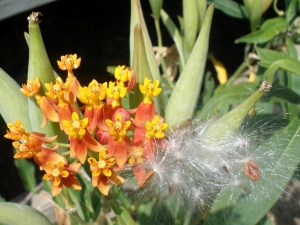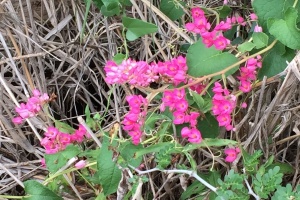Exact terminology is important when words are defined in regard to specific disciplines.
For those logophiles (people who love words) who insist on knowing, without question, what something means in context to what one is learning, here are words commonly encountered when listening to native plant lectures or reading favorite plant books.
Native — Naturally occurring in an area, without human introduction. A plant that is part of the balance of nature that has developed over hundreds or thousands of years in a particular region or ecosystem.
The Lower Rio Grande Valley boasts about 1,000 native plant species.
Indigenous — originating in and characteristic of a particular region or country (native).
Sensitive plant, powderpuff, Mimosa strigillosa, is indigenous to the Rio Grande Valley.

Endemic — a plant unique to a defined geographic location (native.) Star Cactus, Astrophytum asterias, is endemic to Starr County. Starr County is the only recorded Texas locality for the star cactus. (Internet photo.)
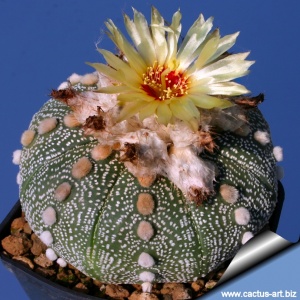
Opportunistic (native plant) — A native plant that is able to take advantage of disturbance to the soil or existing vegetation to spread quickly and out-compete the other plants on the disturbed site. We find that Dicliptera, Dicliptera sexangularis, projects this behavior in Harlingen’s Hugh Ramsey Nature Park.

Aggressive — A native plant that spreads faster than preferred. A plant may be aggressive in one area of a garden or neighborhood and well behaved in another.
Frostweed, Verbesina microptera, is an excellent butterfly nectar plant but before you plant one, you may want to be aware of its aggressive nature. It spreads via underground rhizomes as well as from an incredible number of seeds from the flower heads. Frostweed was allowed rampant reproduction (accidentally) in one of Ramsey Park’s Ebony Loop gardens. The root system is equivalent to an octopus on steroids. However, transplant success is extremely high as the roots withstand voracious digging abuse and being left for a few days crammed into a five-gallon bucket.
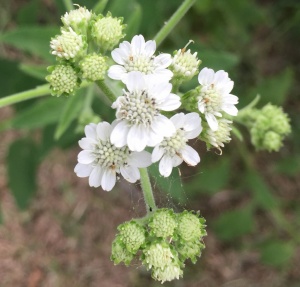
Non-Native — A plant introduced with human help (intentionally or accidentally) to a new place or new type of habitat where it was not previously found.
Mexican honeysuckle, Justicia spicigera, is a native of Mexico, Central and South America. This plant was introduced much to the delight of our hummingbirds and butterflies. It is moderately drought tolerant and so far, well-behaved.
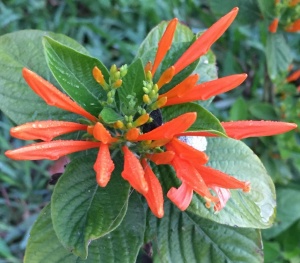
Butterflies flock to non-native cape honeysuckle, Tecoma capensis. It might have earned the Royal Horticultural Society’s Award of Garden Merit across the pond, but most Valley gardeners shy from cape honeysuckle and its runners that can overtake small buildings.
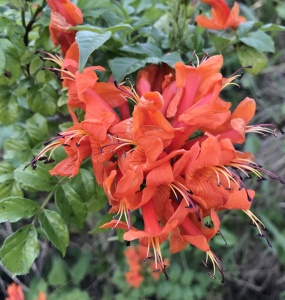
Introduced — An introduced species (also known as an exotic species) is an organism that is not native to the place or area where it is considered introduced and instead has been accidentally or deliberately transported to the new location by human activity.
Red center morning glory, Ipomoea amnicola is native to Paraguay. Scarlet pimpernel, Anagallis arvensis, was introduced from Europe
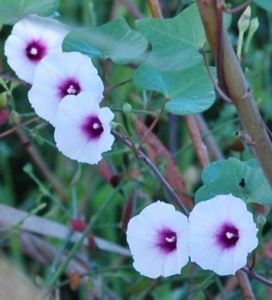
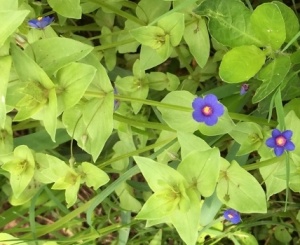
Exotic — Not native; introduced from another region or country. A plant not native to the continent on which it is now found. (Plants from Europe are exotic in North America; plants from North America are exotic in Japan.) Citrus trees are thought to be native to Asia, where they were first domesticated.
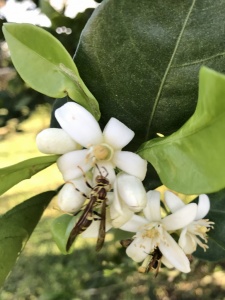
Naturalized — describes a plant, introduced from another region that grows and reproduces readily in competition with the natural flora.
The Brazilian pepper, Schinus terebinthifolius, is a good example of a naturalized exotic. According to authors Dr. Alfred Richardson and Ken King, Plants of Deep South Texas, the seeds are quickly spread by birds, and given the opportunity, the plants grow rapidly, shading out native saplings. Further, the leaves produce a chemical that inhibits germination and growth of other plants. Contact with the plant can cause dermatitis. Those who have tried to eradicate Brazilian pepper agree they’re a nasty piece of work. (Internet photo.)
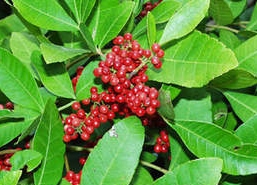
Adaptive — Plants that are not native and not invasive, but are able to thrive (politely) in the local climate and soil conditions. Most often they originate from areas with similar soil types, climates and/or hardiness zones. The Tamaulipan olive, Cordia alba, tree is considered adaptive.
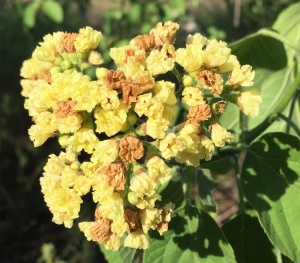
Adventive — The potato tree, Solanum erianthum, is an adventive plant. Thanks to Christina Mild, one of our Thursday morning Ramsey Park volunteers and plant guru, for helping me understand this term. “When diverse native habitat is cleared, a wide number of adventive species may burst forth after decent rainfall, even full-sun species which have not grown in that location for many years. Some types of seed will remain viable for hundreds of years or longer.”
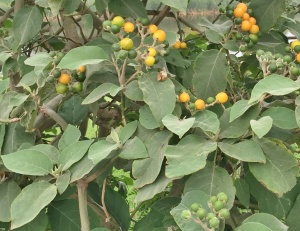
Weed –Anything that does well in farm fields or is poisonous to livestock is considered a weed. Christina Mild gave me an interesting example of a weed. “Milkweed vines, especially climbing milkweed, Funastrum cynanchoides, is a prime example of a beneficial native which most people exterminate.” Climbing milkweed is one of the two known Valley native milkweeds that Monarch caterpillars use as a host plant, however, milkweed is toxic to range animals.
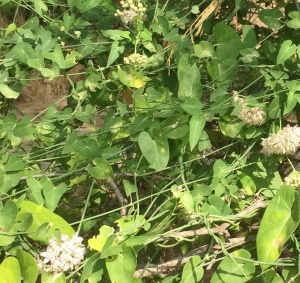
Noxious — Common usage – A plant that is particularly troublesome.
Noxious also has a legal context in the Federal Plant Protection Act, defined as any plant or plant product that can directly or indirectly injure or cause damage to crops, including nursery stock or plant products, livestock, poultry or other interests of agriculture, irrigation, navigation, the natural resources of the United States, the public health, or the environment.
Note: USDA APHIS maintains a list of federally-recognized noxious weeds. It is illegal to import federally listed noxious weeds or transport them across state lines.
Carrizo cane, Arundo donax, and water hyacinth, Eichhornia crassipes, both clog our canals, the Rio Grande and other waterways.

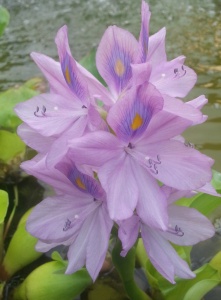
Invasive — a species, usually non-native, that is able to establish itself within existing native plant communities and is posing a threat to the integrity of the ecological community. To most of us who volunteer in nature parks, Guinea grass, Urochloa maxima, is synonymous with the word invasive. It also is opportunistic and loves disturbed soil.
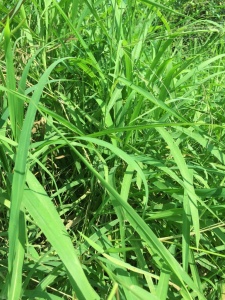
You’ve probably noted that many plants fit into more than one of the listed categories. Probably the dark end of the spectrum is a naturalized, non-native, invasive and noxious species such as carrizo cane. On the friendlier side, well-behaved non-native, introduced, exotic hibiscus are popular in warm-temperate, subtropical and tropical regions throughout the world.
Veintiunilla, Asclepias curassavica, native to the American tropics and Corona de reina, Antigonon leptopus, a native of Mexico, are examples of adaptive, exotic, introduced, and/or naturalized. Both are nectar sources for butterflies. Corona de reina is a vine, its bright pink flowers are usually seen trailing over the tops of trees.
